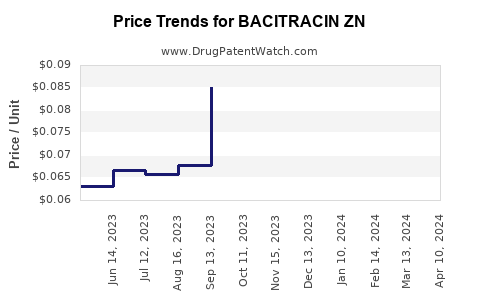Drug Price Trends for BACITRACIN ZN
✉ Email this page to a colleague

Average Pharmacy Cost for BACITRACIN ZN
| Drug Name | NDC | Price/Unit ($) | Unit | Date |
|---|---|---|---|---|
| BACITRACIN ZN 500 UNIT/GM OINT | 24385-0060-03 | 0.09155 | GM | 2024-11-20 |
| BACITRACIN ZN 500 UNIT/GM OINT | 51672-2075-02 | 0.09155 | GM | 2024-11-20 |
| BACITRACIN ZN 500 UNIT/GM OINT | 68001-0531-45 | 0.16782 | GM | 2024-11-20 |
| BACITRACIN ZN 500 UNIT/GM OINT | 51672-2075-01 | 0.16782 | GM | 2024-11-20 |
| BACITRACIN ZN 500 UNIT/GM OINT | 70000-0547-01 | 0.06912 | GM | 2024-11-20 |
| >Drug Name | >NDC | >Price/Unit ($) | >Unit | >Date |


